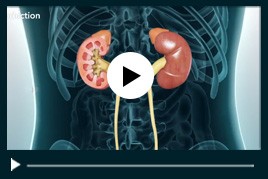Benign Prostate Surgery
What is benign prostate enlargement?
The prostate is a bi-lobed gland situated below the bladder in males and surrounds a part of the urethra (tube that passes urine outside the body). The prostate may sometimes show a benign enlargement, called benign prostatic hyperplasia (BPH), as part of the aging process, which can compress the urethra and obstruct the flow of urine.
When is benign prostate surgery indicated?
Your doctor may recommend surgery as a definitive treatment for BPH in cases of significant difficulty passing urine, repeated urinary tract infections, bladder damage or stones, kidney damage or blood in the urine.
How is benign prostate surgery performed?
Modern surgical procedures usually access the prostate through the urethra so no incision is required. Different approaches to benign prostate surgery include:
- Transurethral resection of the prostate (TURP): Removal of part of the prostate causing obstruction with the help of surgical instruments passed through the urethra
- Transurethral incision of the prostate (TUIP): Making incisions on the prostate with instruments introduced through the urethra to decrease the pressure on the urethra
- Laser therapy: Using laser to make cuts or destroy the obstructive part of the prostate
- Transurethral needle ablation (TUNA): Destroying part of the prostate with a heated needle
- Transurethral microwave therapy (TUMT): Using heat from microwave energy to destroy part of the prostate
- UroLift: A new system which uses implants to shift and hold prostate tissue away from the urethra
- Open prostatectomy: Making an incision on the skin to access and remove the prostate (rarely used and mostly recommended for very large prostates)
Depending on your overall health and individual case, your doctor will discuss the best method to treat BPH.
What are the risks of benign prostate surgery?
As with most surgical procedures, surgery for benign enlargement of the prostate may be associated with certain risks, which include problems with erection, retrograde ejaculation (releasing semen backwards into the bladder during ejaculation) and urinary incontinence (loss of bladder control).

 Menu
Menu




